

This feature is only available to premium members
Check out our Premium Accounts
Select your Account Type
I'm a Parent Add up to 6 children
Login Required
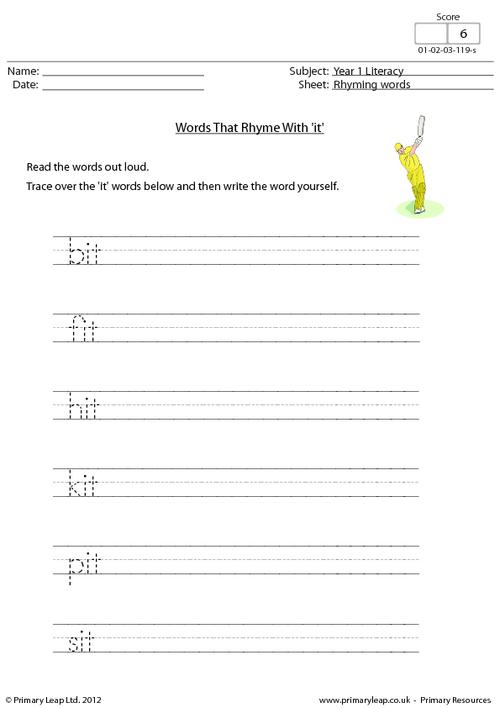
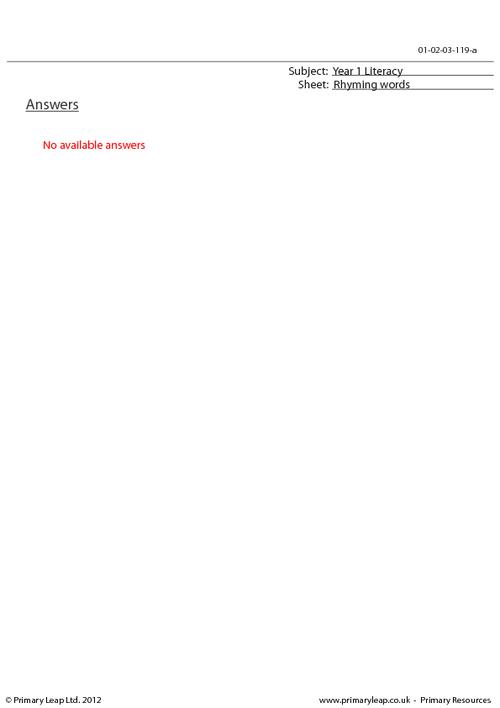

Login Required
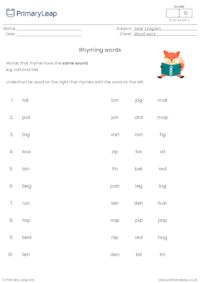
This worksheet covers rhyming for year one. With this year 1 English worksheet, students will read t

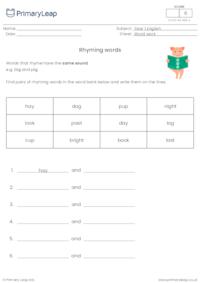
This year one English worksheet asks students to find pairs of rhyming words from the word bank at t

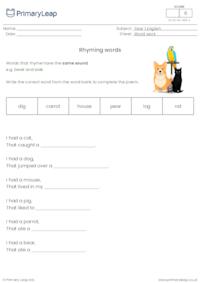
A year one primary resource on rhyming words. Students will need to complete the poem by using a wor

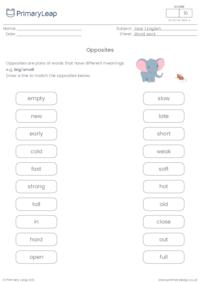
Opposites are pairs of words that have different meanings e.g. big/small. With this year 1 English w

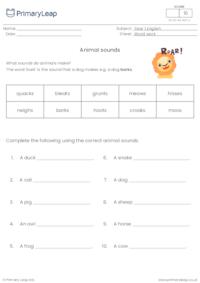
A fun literacy worksheet for year one about animals sounds. The child will need to connect the corre

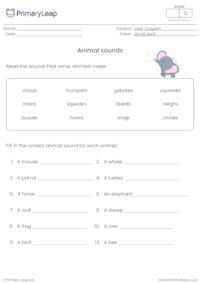
A primary resource for year one pupils on animals and the sounds they make.

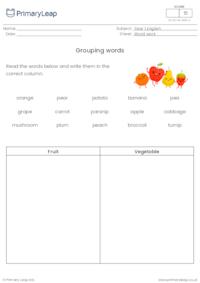
A year one literacy worksheet showing children how to put words into groups. On this worksheet, the

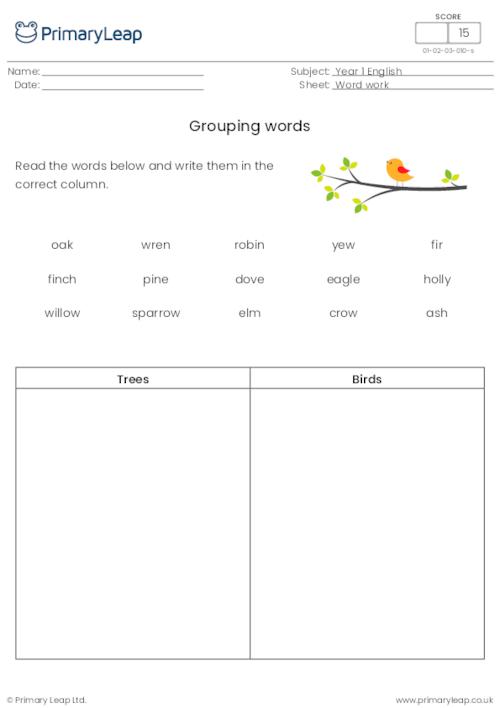
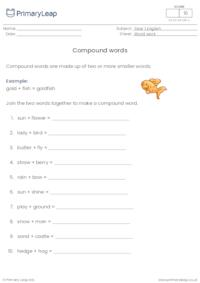
A year one primary resource on compound words. This literacy worksheet asks children to put two word

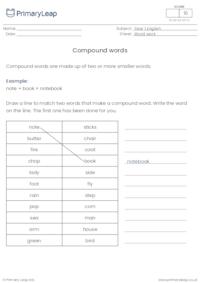
A compound word is made up of two words that come together to make one new word. Students are asked

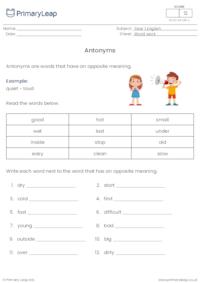
Antonyms are words that have an opposite meaning. This worksheet is great for teaching your students

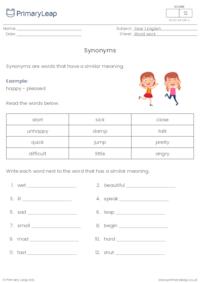
Synonyms are words with a similar meaning. This worksheet is great for teaching your students new wo

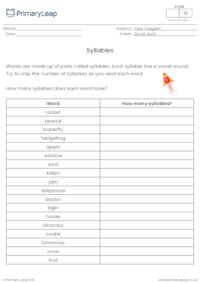
Words are made up of parts called syllables. Each syllable has a vowel sound. This year 1 English wo

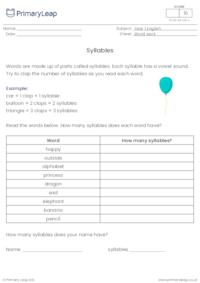
Words are made up of parts called syllables. Each syllable has a vowel sound. This year 1 English wo

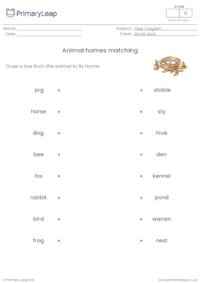
Students look at the animals on the left and draw a line from the animal to its home. This will help

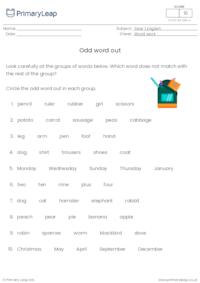
Students are asked to look at the groups of words and underline the odd word out in each line. This

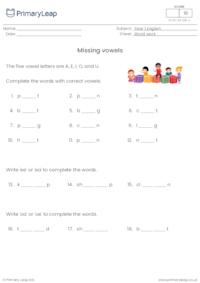
Learning letter sounds is one of the first steps in learning to read. Students are asked to fill in

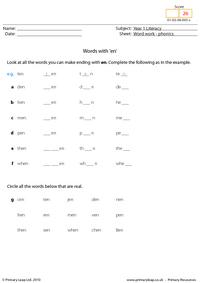
Students look at all the words they can make ending with 'en' and fill in the missing letters.

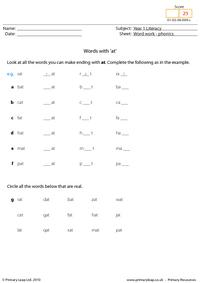
Students look at all the words they can make ending with 'at' and fill in the missing letters.

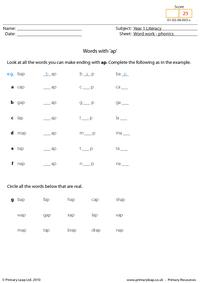
Students look at all the words they can make ending with 'ap' and fill in the missing letters.

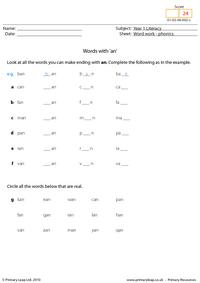
Students look at all the words they can make ending with 'an' and fill in the missing letters.

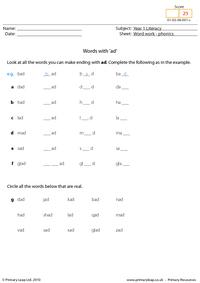
Students look at all the words they can make ending with 'ad' and fill in the missing letters.

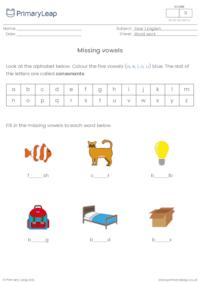
Learning letter sounds is one of the first steps in learning to read. Students are asked to fill in

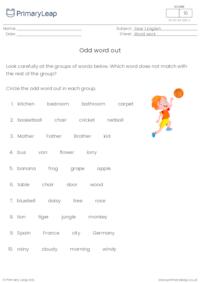
Students are asked to look at the groups of words and underline the odd word out in each line. This

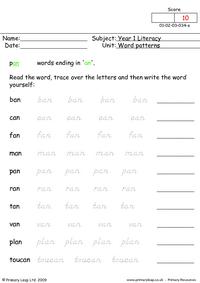
This primary resource for year one covers the word pattern of words ending in 'an'. This literacy wo

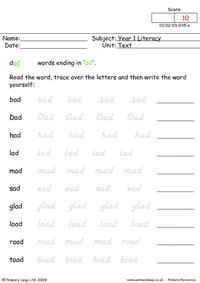
This primary resource for year one covers the word pattern of words ending in 'ad'. This literacy wo

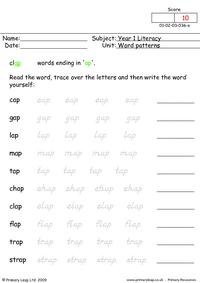
A literacy worksheet for year one pupils on word patterns. This worksheet has word ending in 'ap' wi

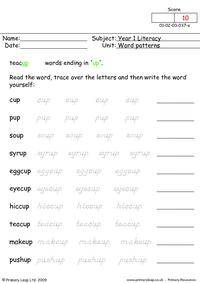
This primary resource for year one covers the word pattern of words ending in 'up'. This literacy wo

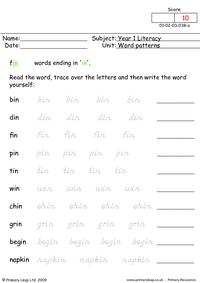
This primary English resource for year one covers the word pattern of words ending in 'in'. This lit

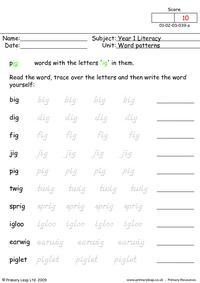
This primary English resource for year one covers the word pattern of words ending in 'ig'. This lit

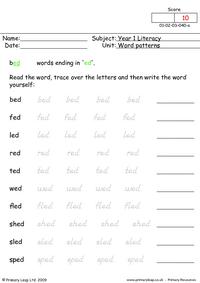
This primary English resource for year one covers the word pattern of words ending in 'ed'. This lit

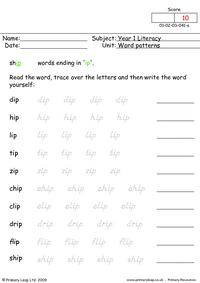
This primary English resource for year one covers the word pattern of words ending in 'ip'. This lit

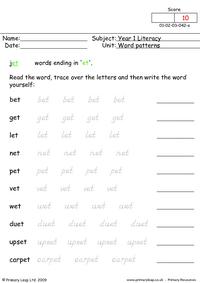
This primary English resource for year one covers the word pattern of words ending in 'et'. This lit

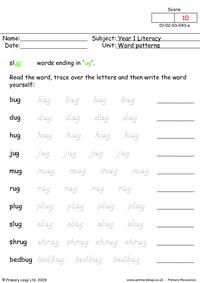
This primary English resource for year one covers the word pattern of words ending in 'ug'. This lit

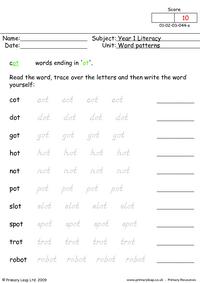
This primary English resource for year one covers the word pattern of words ending in 'ot'. This lit

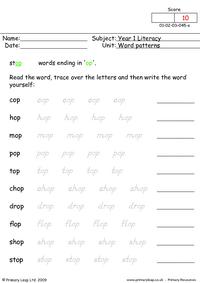
This primary English resource for year one covers the word pattern of words ending in 'op'. This lit

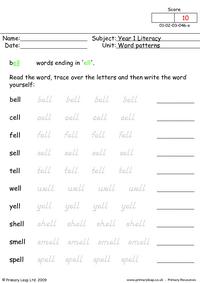
This primary English resource for year one covers the word pattern of words ending in 'ell'. This li

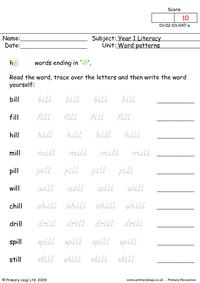
This primary English resource for year one covers the word pattern of words ending in 'ill'. This li

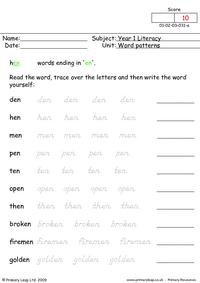
This primary resource for year one covers the word pattern of words ending in 'en'. This literacy wo

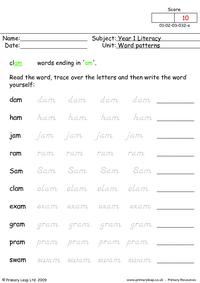
This primary resource for year one covers the word pattern of words ending in 'am'. This literacy wo

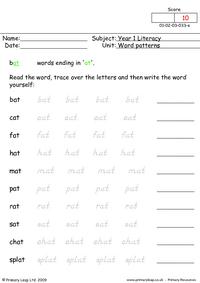
This primary resource for year one covers the word pattern of words ending in 'at'. This literacy wo

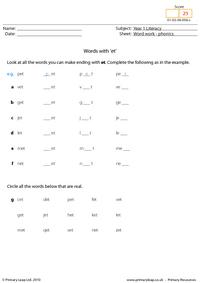
Students look at all the words they can make ending with 'et' and fill in the missing letters.

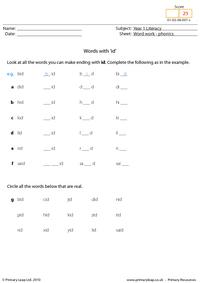
Students look at all the words they can make ending with 'id' and fill in the missing letters.

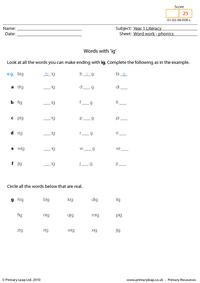
Students look at all the words they can make ending with 'ig' and fill in the missing letters.

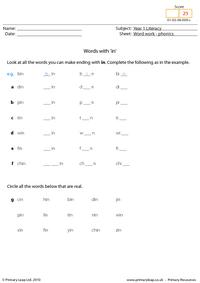
Students look at all the words they can make ending with 'in' and fill in the missing letters.

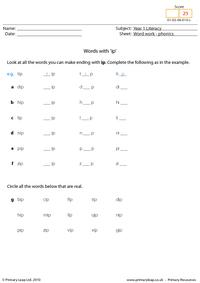
Students look at all the words they can make ending with 'ip' and fill in the missing letters.

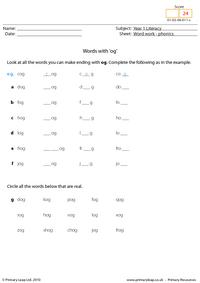
Students look at all the words they can make ending with 'og' and fill in the missing letters.

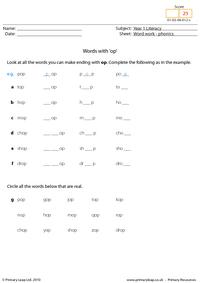
Students look at all the words they can make ending with 'op' and fill in the missing letters.

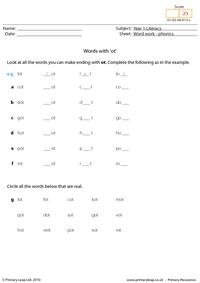
Students look at all the words they can make ending with 'ot' and fill in the missing letters.

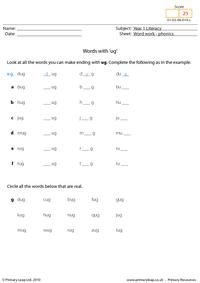
Students look at all the words they can make ending with 'ug' and fill in the missing letters.

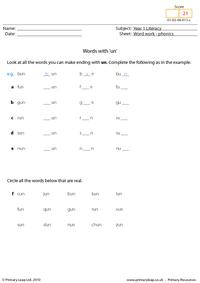
Students look at all the words they can make ending with 'un' and fill in the missing letters.

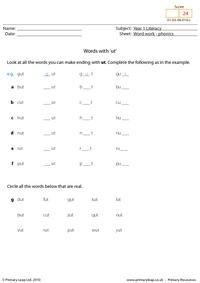
Students look at all the words they can make ending with 'ut' and fill in the missing letters.

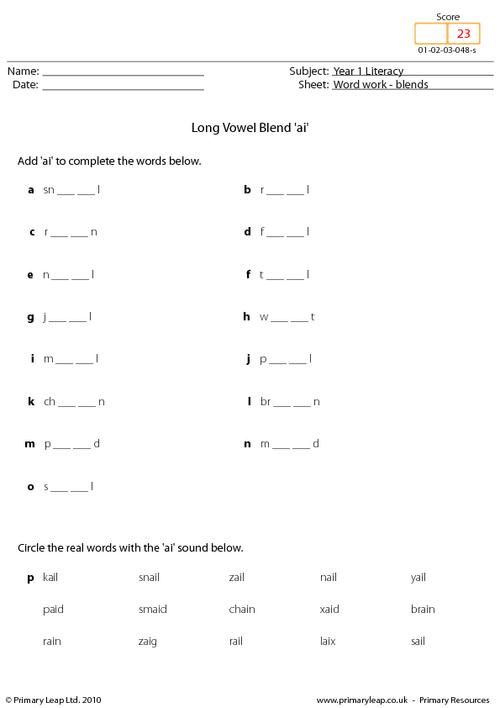
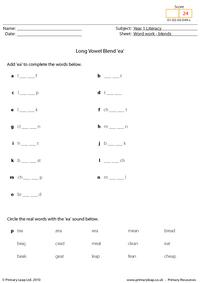
This English resource asks students to fill in the words with the missing 'ea' blend.

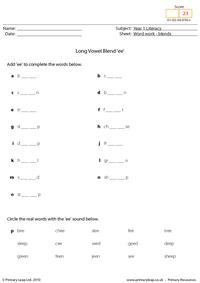
This English resource asks students to fill in the words with the missing 'ee' blend.

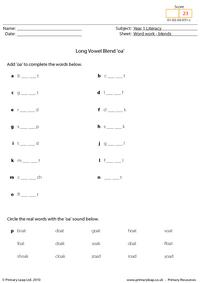
This English resource asks students to fill in the words with the missing 'oa' blend.

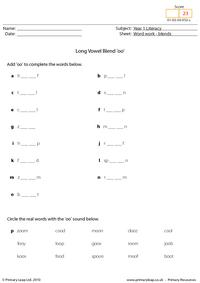
This English resource asks students to fill in the words with the missing 'oo' blend.

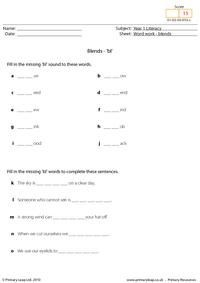
A blend is a word formed from parts of two or more other words. Students are asked to fill in the mi

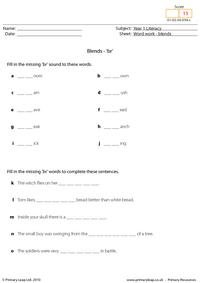
A blend is a word formed from parts of two or more other words. Students are asked to fill in the mi

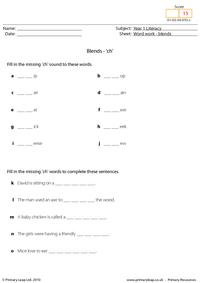
A blend is a word formed from parts of two or more other words. Students are asked to fill in the mi

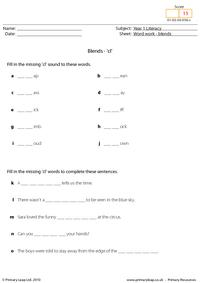
A blend is a word formed from parts of two or more other words. Students are asked to fill in the mi

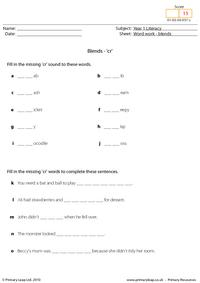
A blend is a word formed from parts of two or more other words. Students are asked to fill in the mi

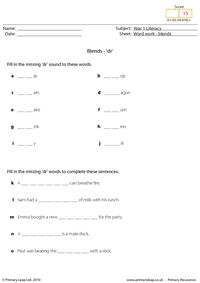
A blend is a word formed from parts of two or more other words. Students are asked to fill in the mi

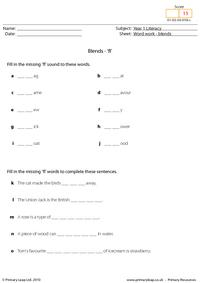
A blend is a word formed from parts of two or more other words. Students are asked to fill in the mi

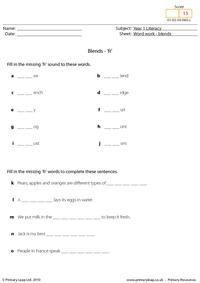
A blend is a word formed from parts of two or more other words. Students are asked to fill in the mi

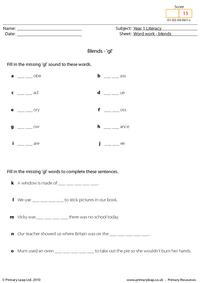
A blend is a word formed from parts of two or more other words. Students are asked to fill in the mi

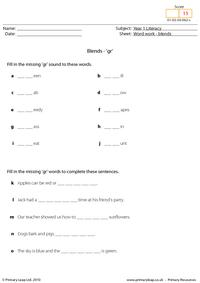
A blend is a word formed from parts of two or more other words. Students are asked to fill in the mi

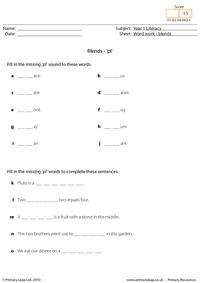
A blend is a word formed from parts of two or more other words. Students are asked to fill in the mi

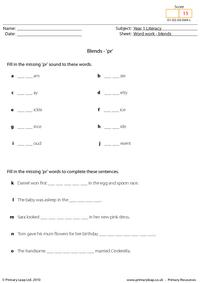
A blend is a word formed from parts of two or more other words. Students are asked to fill in the mi

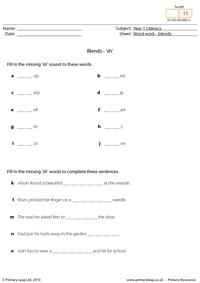
A blend is a word formed from parts of two or more other words. Students are asked to fill in the mi

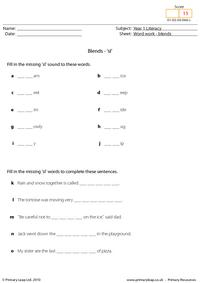
A blend is a word formed from parts of two or more other words. Students are asked to fill in the mi

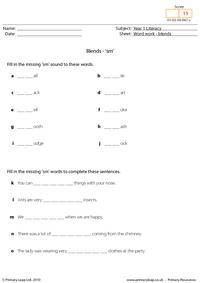
A blend is a word formed from parts of two or more other words. Students are asked to fill in the mi

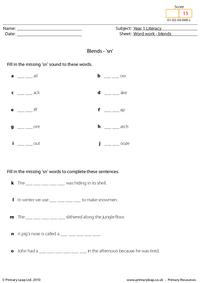
A blend is a word formed from parts of two or more other words. Students are asked to fill in the mi

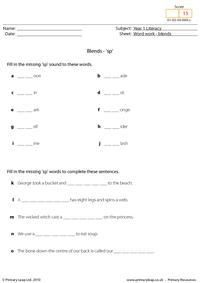
A blend is a word formed from parts of two or more other words. Students are asked to fill in the mi

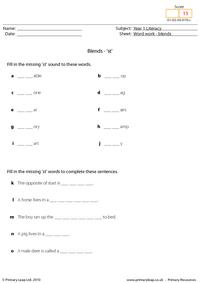
A blend is a word formed from parts of two or more other words. Students are asked to fill in the mi


A blend is a word formed from parts of two or more other words. Students are asked to fill in the mi
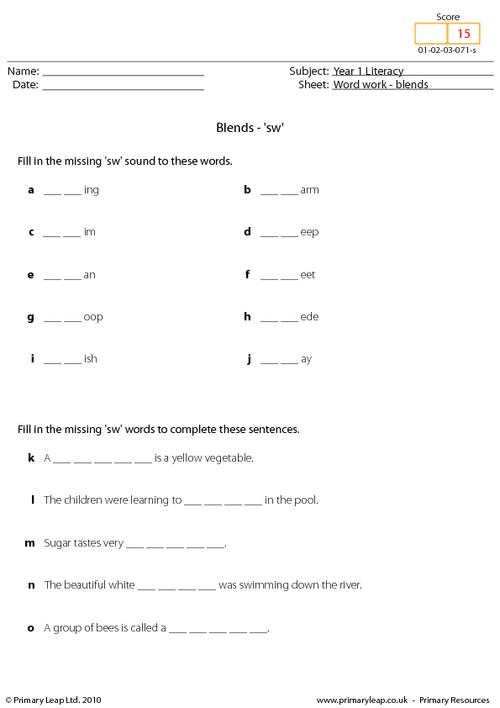
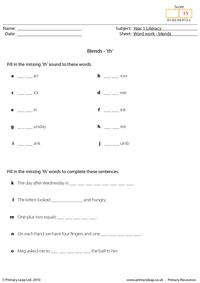
A blend is a word formed from parts of two or more other words. Students are asked to fill in the mi

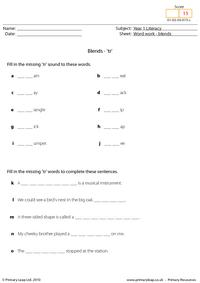
A blend is a word formed from parts of two or more other words. Students are asked to fill in the mi

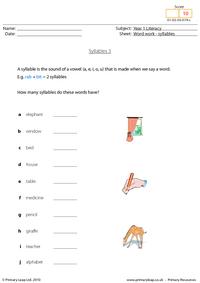
How many syllables do these words have? Students say the word and write the number of syllables next

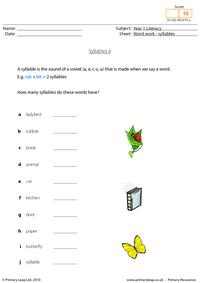
How many syllables do these words have? Students say the word and write the number of syllables next

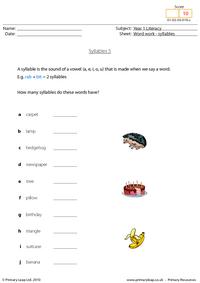
How many syllables do these words have? Students say the word and write the number of syllables next

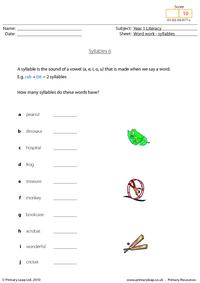
How many syllables do these words have? Students say the word and write the number of syllables next

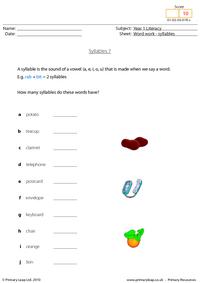
How many syllables do these words have? Students say the word and write the number of syllables next

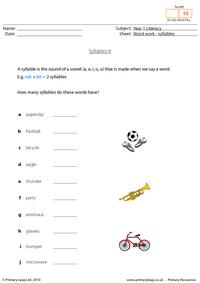
How many syllables do these words have? Students say the word and write the number of syllables next

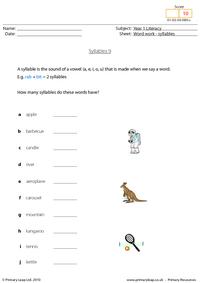
How many syllables do these words have? Students say the word and write the number of syllables next

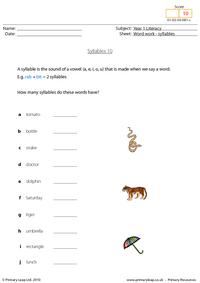
How many syllables do these words have? Students say the word and write the number of syllables next

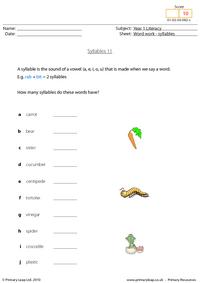
How many syllables do these words have? Students say the word and write the number of syllables next

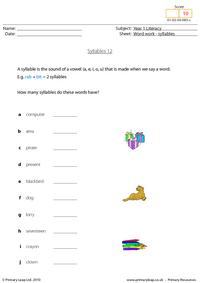
How many syllables do these words have? Students say the word and write the number of syllables next

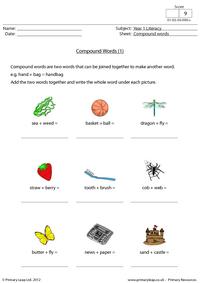
This year 1 literacy worksheet focuses on compound words. Children must add the words together and w

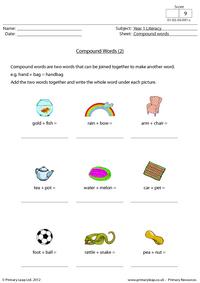
This year 1 literacy worksheet focuses on compound words. Children must add the words together and w

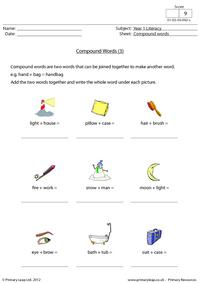
This year 1 literacy worksheet focuses on compound words. Children must add the words together and w

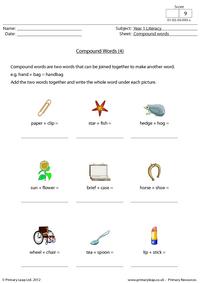
This year 1 literacy worksheet focuses on compound words. Children must add the words together and w

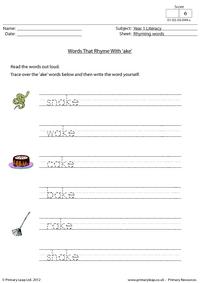
This year 1 worksheet focuses on words that end in 'ake'. Children must read the words, trace over t

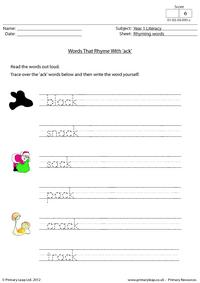
This year 1 worksheet focuses on words that end in 'ack'. Children must read the words, trace over t

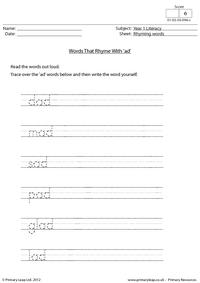
This year 1 worksheet focuses on words that end in 'ad'. Children must read the words, trace over th

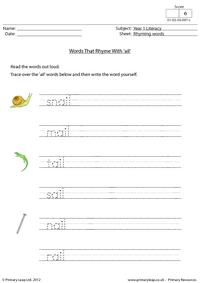
This year 1 worksheet focuses on words that end in 'ail'. Children must read the words, trace over t

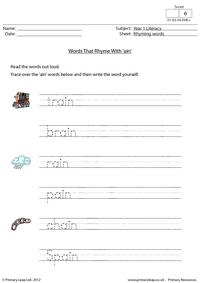
This year 1 worksheet focuses on words that end in 'ain'. Children must read the words, trace over t

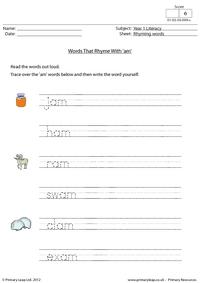
This year 1 worksheet focuses on words that end in 'am'. Children must read the words, trace over th

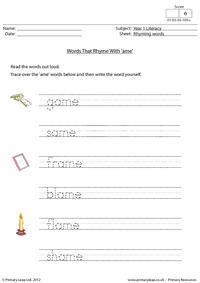
This year 1 worksheet focuses on words that end in 'ame'. Children must read the words, trace over t

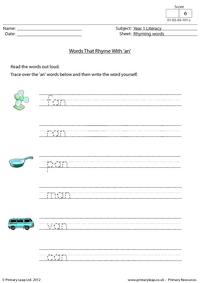
This year 1 worksheet focuses on words that end in 'an'. Children must read the words, trace over th

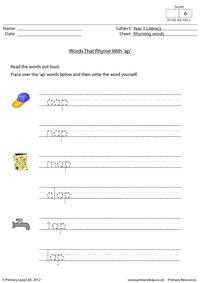
This year 1 worksheet focuses on words that end in 'ap'. Children must read the words, trace over th

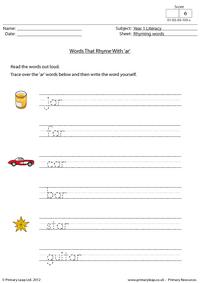
This year 1 worksheet focuses on words that end in 'ar'. Children must read the words, trace over th

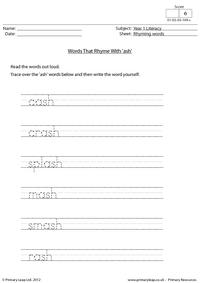
This year 1 worksheet focuses on words that end in 'ash'. Children must read the words, trace over t

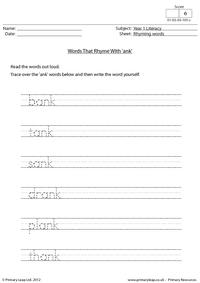
This year 1 worksheet focuses on words that end in 'ank'. Children must read the words, trace over t

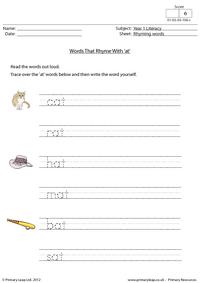
This year 1 worksheet focuses on words that end in 'at'. Children must read the words, trace over th

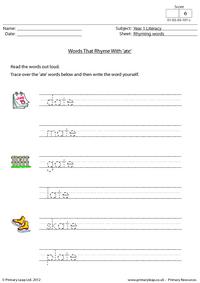
This year 1 worksheet focuses on words that end in 'ate'. Children must read the words, trace over t

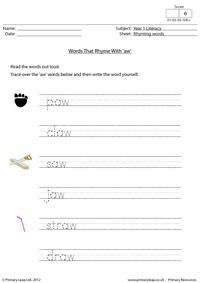
This year 1 worksheet focuses on words that end in 'aw'. Children must read the words, trace over th

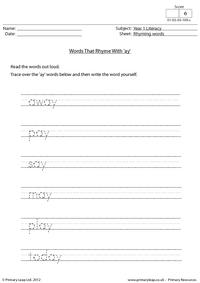
This year 1 worksheet focuses on words that end in 'ay'. Children must read the words, trace over th

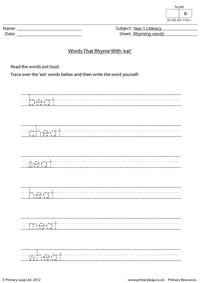
This year 1 worksheet focuses on words that end in 'eat'. Children must read the words, trace over t

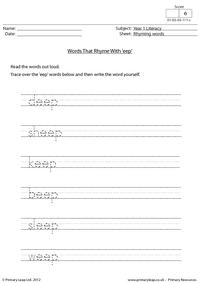
This year 1 worksheet focuses on words that end in 'eep'. Children must read the words, trace over t

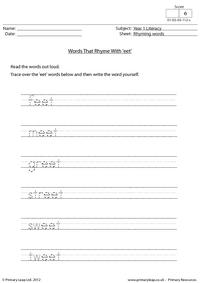
This year 1 worksheet focuses on words that end in 'eet'. Children must read the words, trace over t

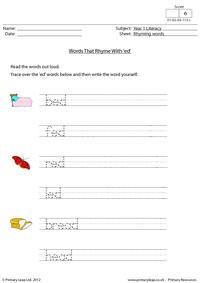
This year 1 worksheet focuses on words that end in 'ed'. Children must read the words, trace over th

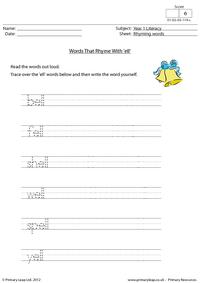
This year 1 worksheet focuses on words that end in 'ell'. Children must read the words, trace over t

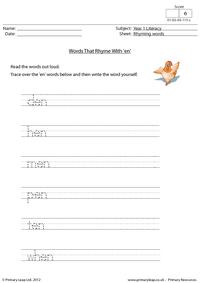
This year 1 worksheet focuses on words that end in 'en'. Children must read the words, trace over th

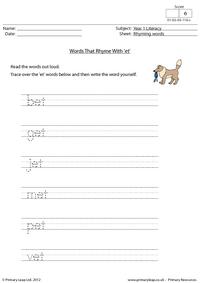
This year 1 worksheet focuses on words that end in 'et'. Children must read the words, trace over th

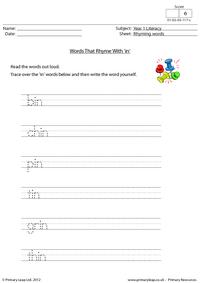
This year 1 worksheet focuses on words that end in 'in'. Children must read the words, trace over th

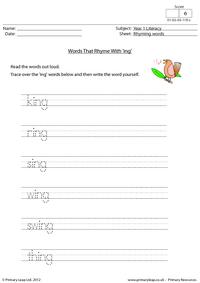
This year 1 worksheet focuses on words that end in 'ing'. Children must read the words, trace over t


This year 1 worksheet focuses on words that end in 'it'. Children must read the words, trace over th

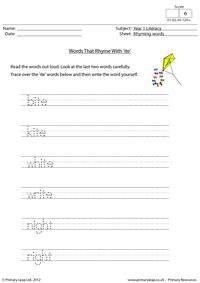
This year 1 worksheet focuses on words that end in 'ite'. Children must read the words, trace over t

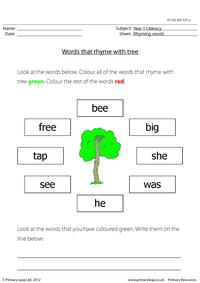
Year 1 English: Word work. Students are asked to look at the words and colour the words that rhyme w

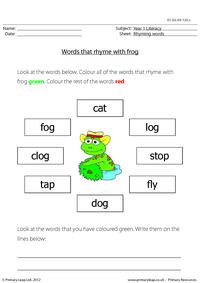
Year 1 English: Word work. Students are asked to look at the words and colour the words that rhyme w

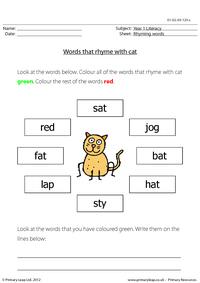
Year 1 English: Word work. Students are asked to look at the words and colour the words that rhyme w

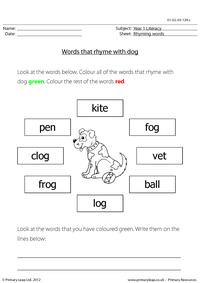
Year 1 English: Word work. Students are asked to look at the words and colour the words that rhyme w

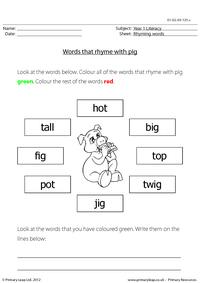
Year 1 English: Word work. Students are asked to look at the words and colour the words that rhyme w


Year 1 English: Word work. Students are asked to look at the words and colour the words that rhyme w
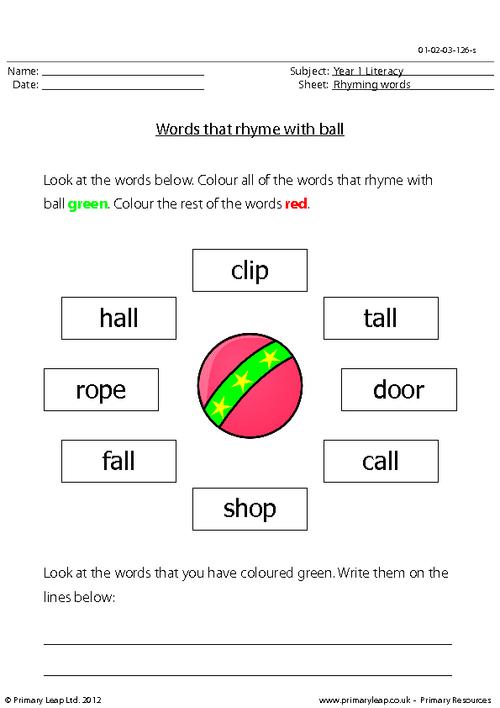
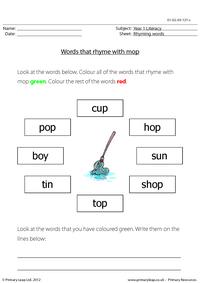
Year 1 English: Word work. Students are asked to look at the words and colour the words that rhyme w

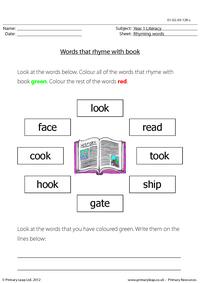
Year 1 English: Word work. Students are asked to look at the words and colour the words that rhyme w

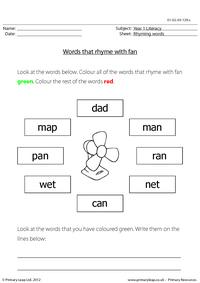
Year 1 English: Word work. Students are asked to look at the words and colour the words that rhyme w

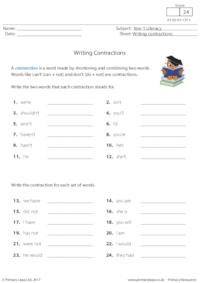
A contraction is a word made by shortening and combining two words. Words like can’t (can +

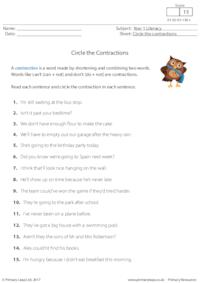
A contraction is a word made by shortening and combining two words. Words like can't (can + not) a

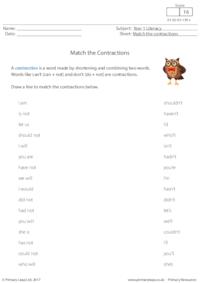
A contraction is a word made by shortening and combining two words. Words like can’t (can +

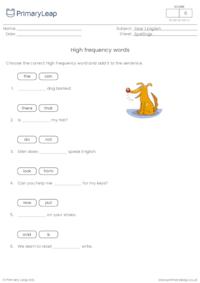
A helpful resource to help children read and write high frequency words. Children choose the correct

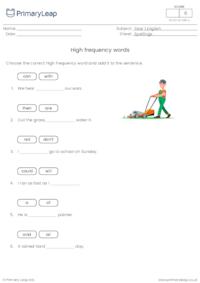
A helpful resource to help children read and write high frequency words. Children choose the correct

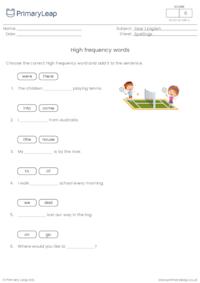
A helpful resource to help children read and write high frequency words. Children choose the correct

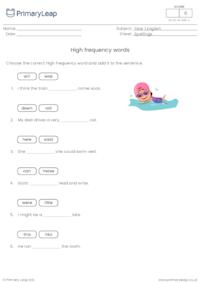
A helpful resource to help children read and write high frequency words. Children choose the correct

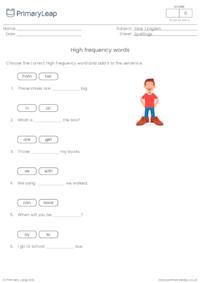
A helpful resource to help children read and write high frequency words. Children choose the correct

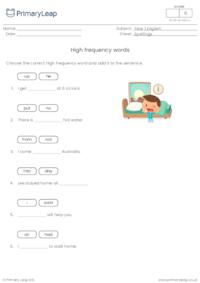
A helpful resource to help children read and write high frequency words. Children choose the correct

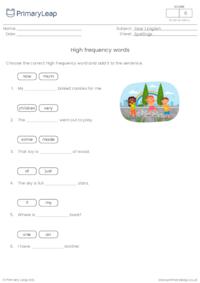
A helpful resource to help children read and write high frequency words. Children choose the correct

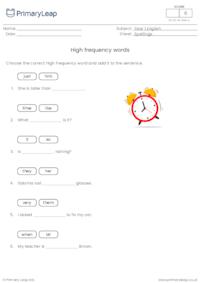
A helpful resource to help children read and write high frequency words. Children choose the correct

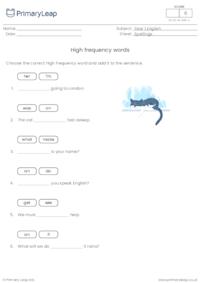
A helpful resource to help children read and write high frequency words. Children choose the correct

An email has been sent to your account please activate your account to continue.
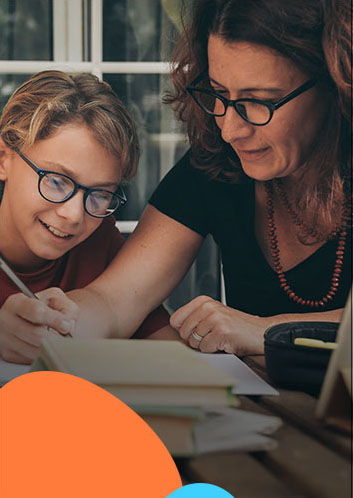


Select your Account Type
I'm a Parent Add up to 6 children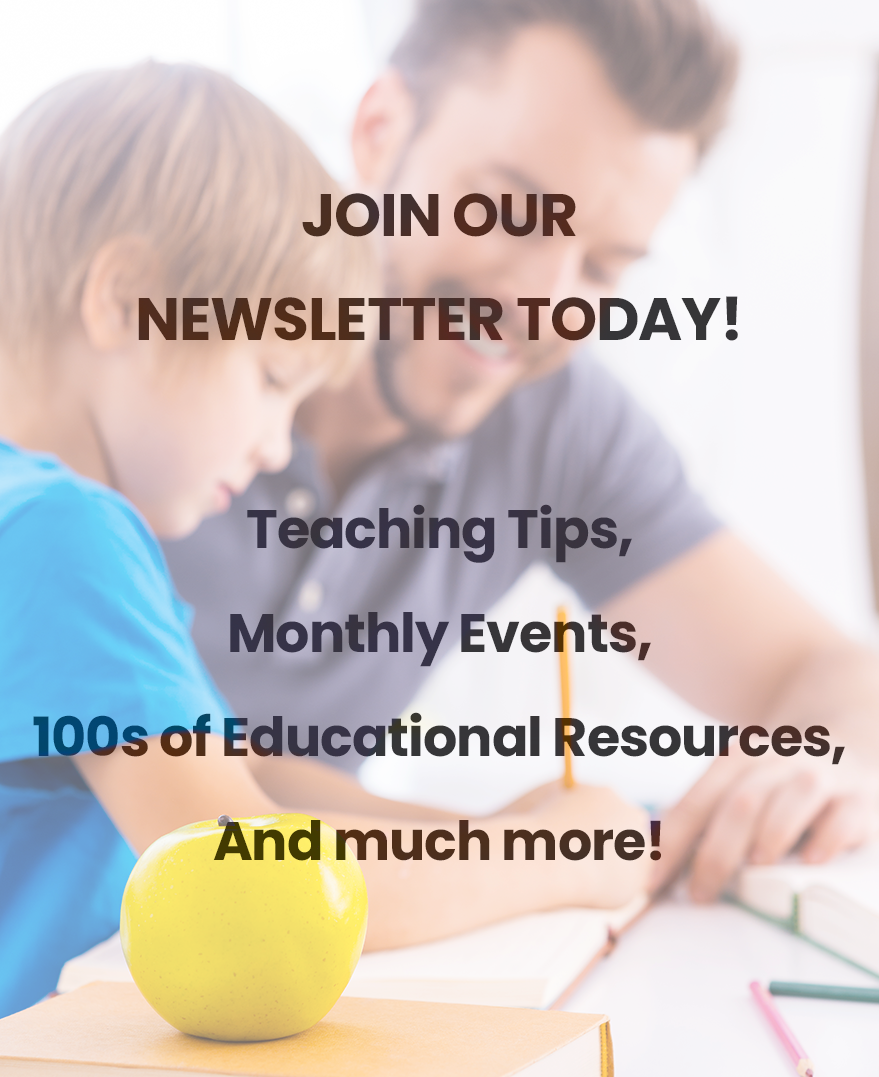
PrimaryLeap has introduced a new interactive learning platform and would like to offer you a completely Free Upgrade.
We understand that you may only want to use our services for worksheets and may not want to upgrade your account.
But if you are interested in trying out our new services then you're just a click away.

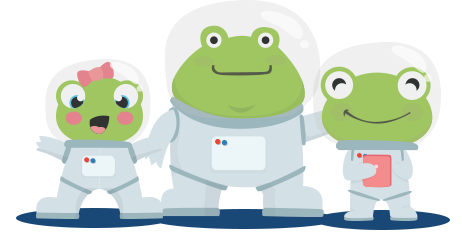
An email has been sent to your account please activate your account to continue.
You've answered
and have 2 Questions remaining
Import multiple students information through a CSV File. Browse or drag .CSV file below.


